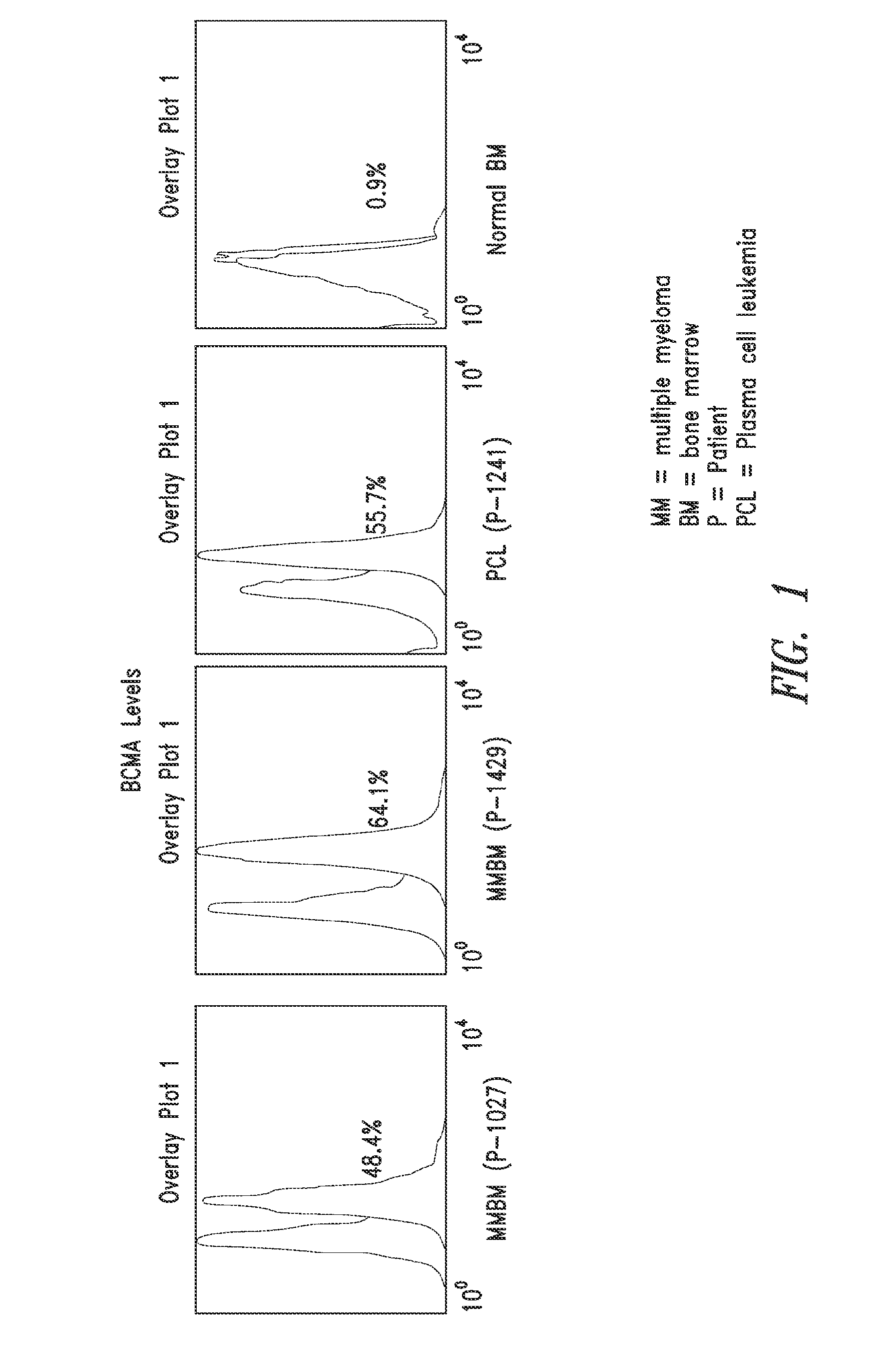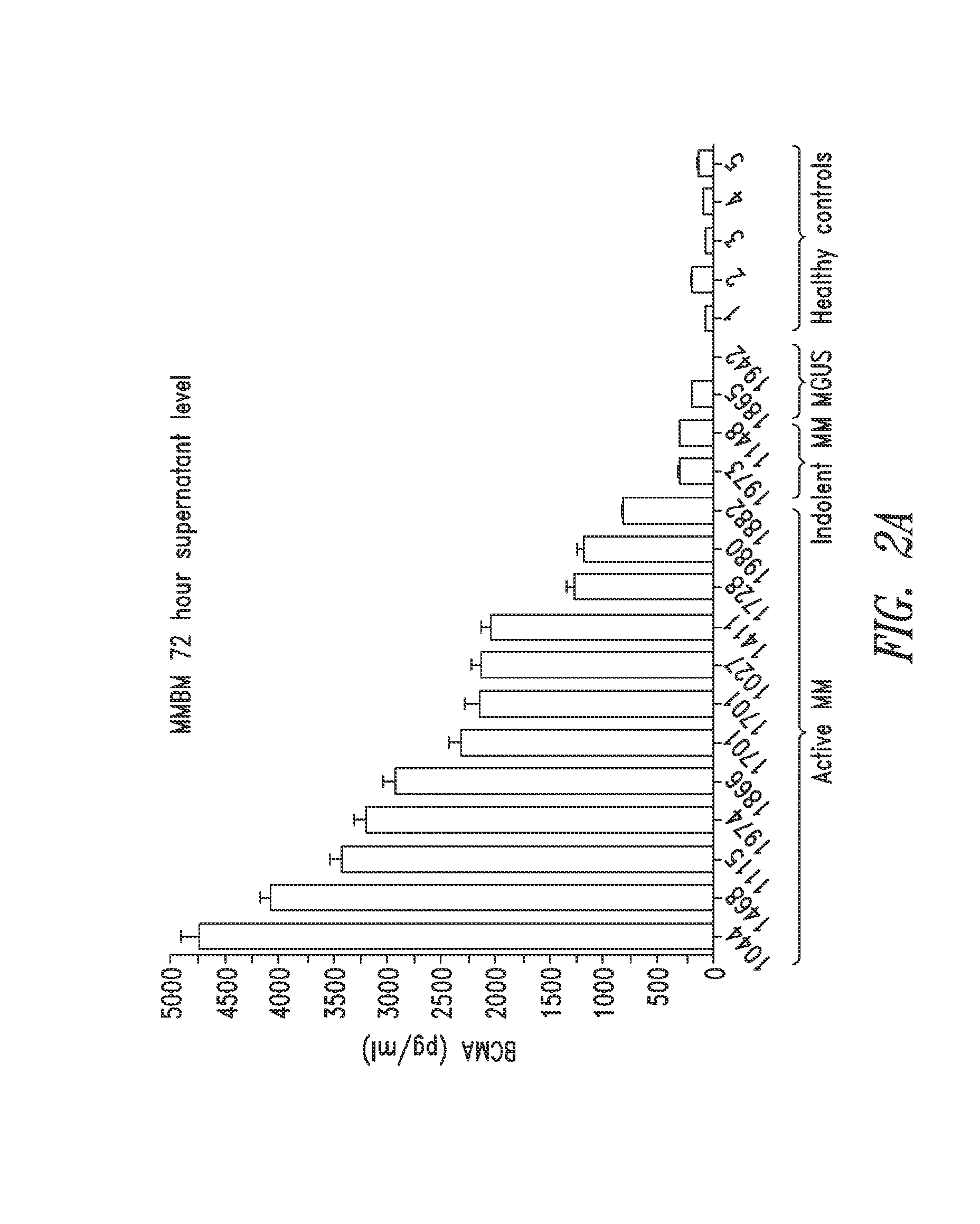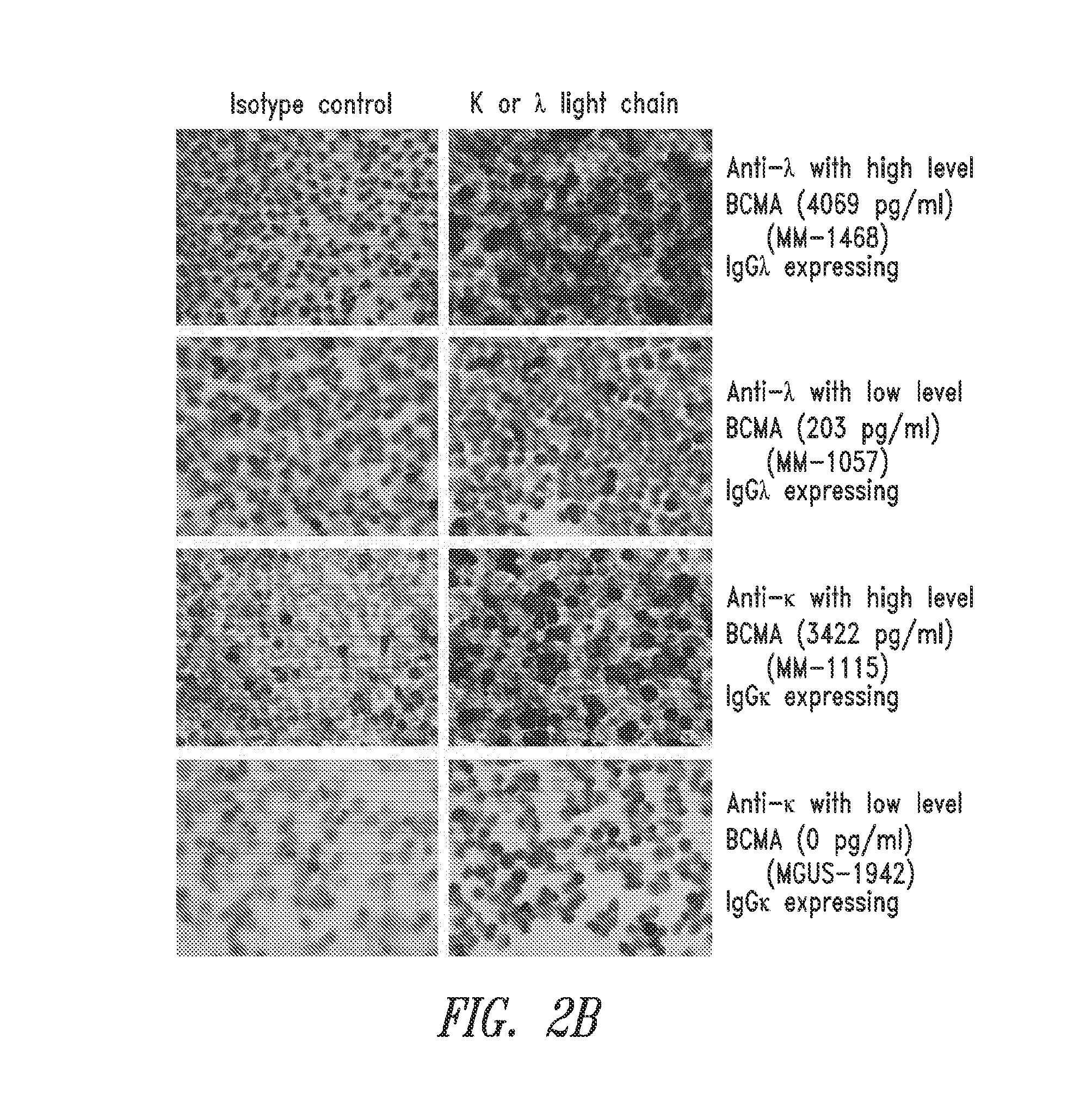Diagnostic, prognostic, and monitoring methods for multiple myeloma, chronic lymphocytic leukemia, and b-cell non-hodgkin lymphoma
a technology for multiple myeloma and chronic lymphocytic leukemia, which is applied in the field of diagnosis, prognosis, and monitoring of cancer, can solve the problems of unreported serum levels of bcma, difficult to determine the response to therapy, and inability to reliably detect the level of bcma
- Summary
- Abstract
- Description
- Claims
- Application Information
AI Technical Summary
Benefits of technology
Problems solved by technology
Method used
Image
Examples
example 1
BMMCs from Mm Patients Showed BCMA Expression and Culture Medium from these Cells Showed High BCMA Concentrations
[0172]The membrane-bound B-cell maturation antigen (BCMA) expression on bone marrow mononuclear cells (BMMCs) from multiple myeloma (MM) patients and healthy subjects (1×104 cells) was measured using flow cytometric analysis. BCMA protein was detected on a very small proportion of BMMCs from healthy subjects whereas most BMMCs from MM patients showed strong BCMA staining (FIG. 1). BCMA expression was also strong in peripheral blood mononuclear cells (PBMCs) from a patient with plasma cell leukemia (FIG. 1). The presence of BCMA in CD138-expressing and light chain-restricted BMMCs from MM patients (data not shown) was also confirmed.
[0173]BMMCs (1.6×106 cells / well) from MM patients with active disease (n=12 samples) or indolent disease (n=2), two MGUS individuals, and five healthy subjects were cultured for 72 h to determine if MM cells from BM are capable of releasing BCM...
example 2
Supernatant BCMA Levels Correlated with the Percentage of MM Plasma Cells
[0174]The concentrations of BCMA in the culture medium correlated with the percentage of MM plasma cells in the BMMCs. H&E and λ and κ light chain staining was performed to identify malignant plasma cells. Total numbers of nucleated cells and plasma cells were counted and the proportions of malignant cells were calculated. Patients with a high percentage of malignant cells (>70% of MM tumor cells) as determined by the proportion of cells showing light chain staining, demonstrated high concentrations of BCMA in their culture medium whereas those with few light chain staining cells had low BCMA levels in their culture medium (FIG. 2B).
example 3
Serum BCMA Levels were Elevated in MM Patients
[0175]BCMA levels in sera from patients with newly diagnosed MM (n=50), MGUS individuals (n=23) and healthy control subjects (n=40) that were age- and gender-matched were measured. The MM patients included those with IgGκ (n=24), IgGλ (n=9), IgAκ (n=6), IgAλ (n=3), IgMκ (n=1), κ light chain only (n=4), and 2 light chain only (n=3) disease. The International Staging System (Greipp et al., 2005) was used; 30, 12 and seven patients were stages 1, 2, and 3 respectively, and one was unknown. The serum levels of BCMA in MM patients were elevated when compared to healthy controls (P<0.0001) and MGUS individuals (P=0.0157; FIG. 3A). In particular, the median serum BCMA concentrations in MM, MGUS and controls were 13.87 ng / mL, 5.30 ng / mL, and 2.57 ng / mL, respectively.
[0176]Indolent MM patients (n=16) had lower levels (median 11.60 ng / mL) than among those with active MM (n=34, median 17.79 ng / mL). In addition, one MGUS patient who eventually progr...
PUM
| Property | Measurement | Unit |
|---|---|---|
| diameter | aaaaa | aaaaa |
| concentration | aaaaa | aaaaa |
| concentrations | aaaaa | aaaaa |
Abstract
Description
Claims
Application Information
 Login to View More
Login to View More - R&D
- Intellectual Property
- Life Sciences
- Materials
- Tech Scout
- Unparalleled Data Quality
- Higher Quality Content
- 60% Fewer Hallucinations
Browse by: Latest US Patents, China's latest patents, Technical Efficacy Thesaurus, Application Domain, Technology Topic, Popular Technical Reports.
© 2025 PatSnap. All rights reserved.Legal|Privacy policy|Modern Slavery Act Transparency Statement|Sitemap|About US| Contact US: help@patsnap.com



